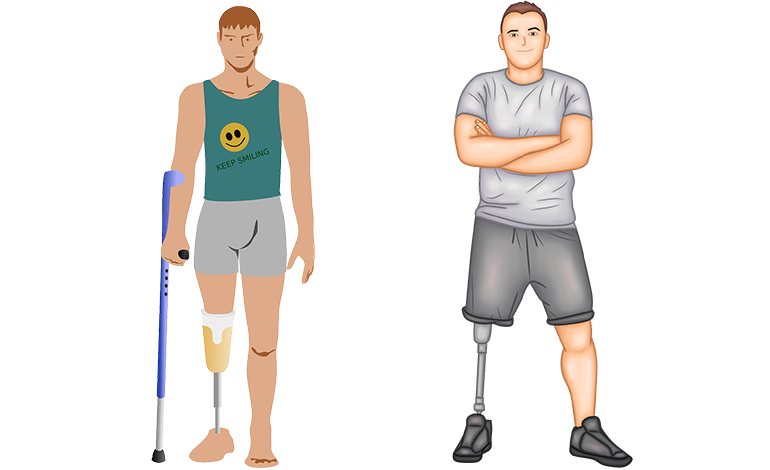
Amputation
Loss or removal of body part mostly caused by trauma, disturbances in blood supply to a part of the body.
Loss of a body part adversely affect ones life which has to be managed well – to avoid complications and to improve one potential for independent life.
Levels of Amputation
Lower limb amputations – Most common lower limb amputations are toe level, above knee level and below knee level. Amputations that are less common are foot level, ankle level, knee level, and hip level.
Upper limb amputations – Most common upper limb amputations are above elbow level and below elbow level amputation. Amputations that are less common are shoulder level, elbow level, wrist level, and finger level.
Problems associated with Amputation
- Swelling in the residual limb
- Pain at the surgery site accompanied at times with a burning sensation
- Phantom limb sensation – A common condition where you think you still have the limb that has been amputated
- Phantom limb pain – A condition where you notice pain in the limb which has been amputated
- Surgical Wound
- Weakness or muscle imbalance since the muscles have been cut during amputation
- Stiffness of the joints near the amputated site if proper exercises are not done
- Difficulty in walking or performing activities of daily living such as eating, bathing, dressing etc depending on whether the amputation was in the arm or leg
Along with managing the problems associated with amputation, our main objective is to fit a prosthesis – either upper limb or lower limb. In case of upper limb prosthesis, functional training of upper limb / hand has to be given. In case of lower limb prosthesis, gait training (walking) is very important for ambulation and activities of daily living.
Back to Services
